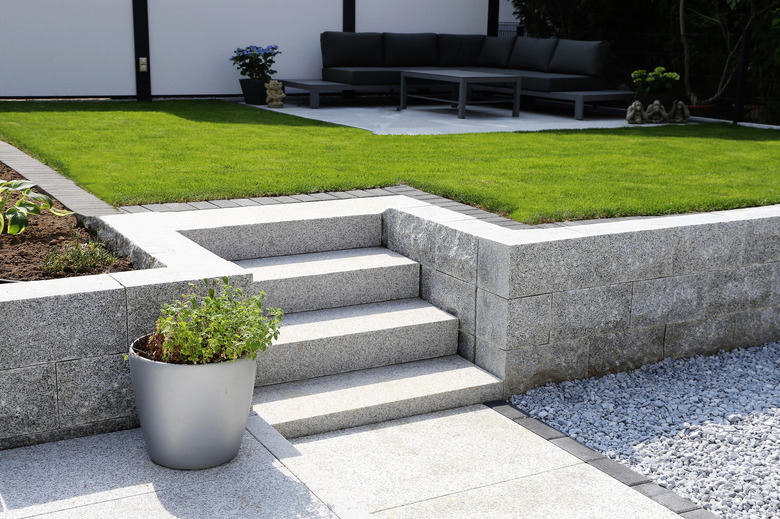How To Remove Landscape Block Adhesive
We may receive a commission on purchases made from links.
Landscape block adhesive offers a secure, yet flexible bond between two masonry surfaces or masonry and a dissimilar surface. Landscape block adhesive is an exterior grade adhesive that withstands weather conditions and temperature changes while remaining strong. Many times homeowners decide they no longer desire the original placement of a previously bonded object and want to separate the pieces, making landscape block adhesive elimination a requirement.
Removing Block Adhesive From Skin
Removing Block Adhesive From Skin
Examine the landscape block adhesive label to determine if the adhesive is latex or solvent based. Most exterior landscape block adhesives are solvent based. Wash the latex-based adhesive-covered area with soap and warm water. Scrub the area gently with a soft-bristled scrub brush. Continue to scrub until no landscape adhesive remains.
Coat the solvent-based, adhesive-coated area of your skin generously with baby oil, petroleum jelly or olive oil. If the solvent-based adhesive is bonding fingers or hands together, place your hands in a plastic container and pour baby oil or olive oil over your hands until the oil covers the adhesive. Allow the oil or petroleum jelly to soak into the skin for 10 to 15 minutes.
Rub a soft-bristled scrub brush over the oil-soaked adhesive to scrape it off the skin. If adhesive bonds hands or fingers together, gently separate your fingers or hands without pulling at the skin. If the body parts separate easily, scrub them with a scrub brush. If they do not separate easily, continue to soak them until separation is effortless.
Removing Block Adhesive From Surfaces
Removing Block Adhesive From Surfaces
You need to get at the adhesives if you want to remove the bonding that holds landscape bricks or blocks together. Once you've done that, you remove the adhesive in a way that's similar to how you removed the adhesive from your skin. Remember, this adhesive is not mortar. Most construction adhesives can be softened using heat.
You can try to soften the adhesive or caulk by heating it with a heat gun or a hair dryer. That will work for some of the residue, but you may have some left on the brick or block.
In that case, you want to apply a thick coating of petroleum jelly to the adhesive, and allow it to soak in for one to two hours. Scrape the remaining landscape block adhesive off the surfaces with a broad-bladed metal putty knife. You may have to soften it a few times over a period of a few days.
Separate the Blocks if Necessary
Separate the Blocks if Necessary
You may need to separate blocks to get all the adhesive off, and you want to do this without damaging the blocks. Position a thin-bladed chisel onto the seam line between the two surfaces. Begin at the right or left end of the masonry, wood or metal surface. Tap the handle of the chisel with a mallet to force it between the two surfaces. Insert a thin-bladed screwdriver into the gap created by the chisel to hold open the gap.
Pull the chisel out and move it slightly toward the center. Tap the chisel's handle with a mallet to pry open another small gap. Insert a second flat-bladed screwdriver to act as a wedge and keep open the gap. Continue to pry apart the two surfaces with this method until you are able to free them.
